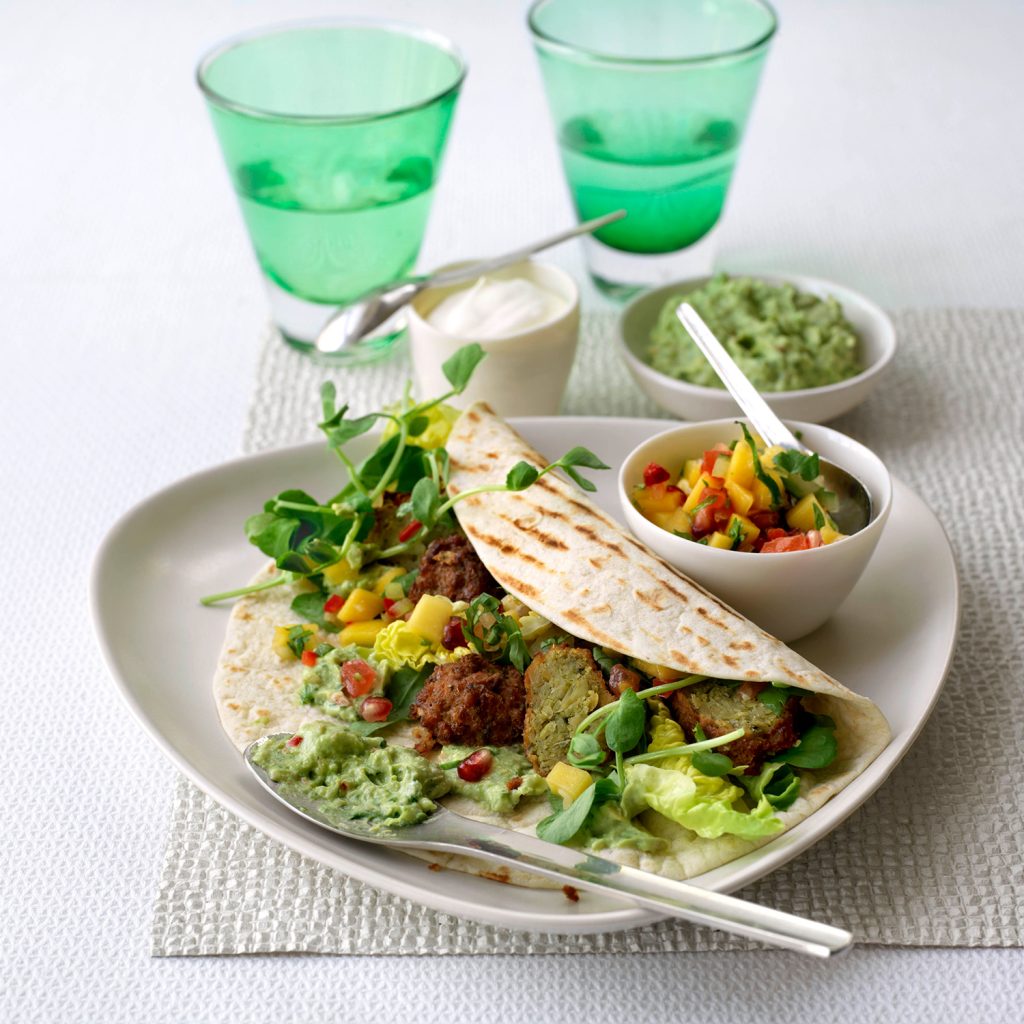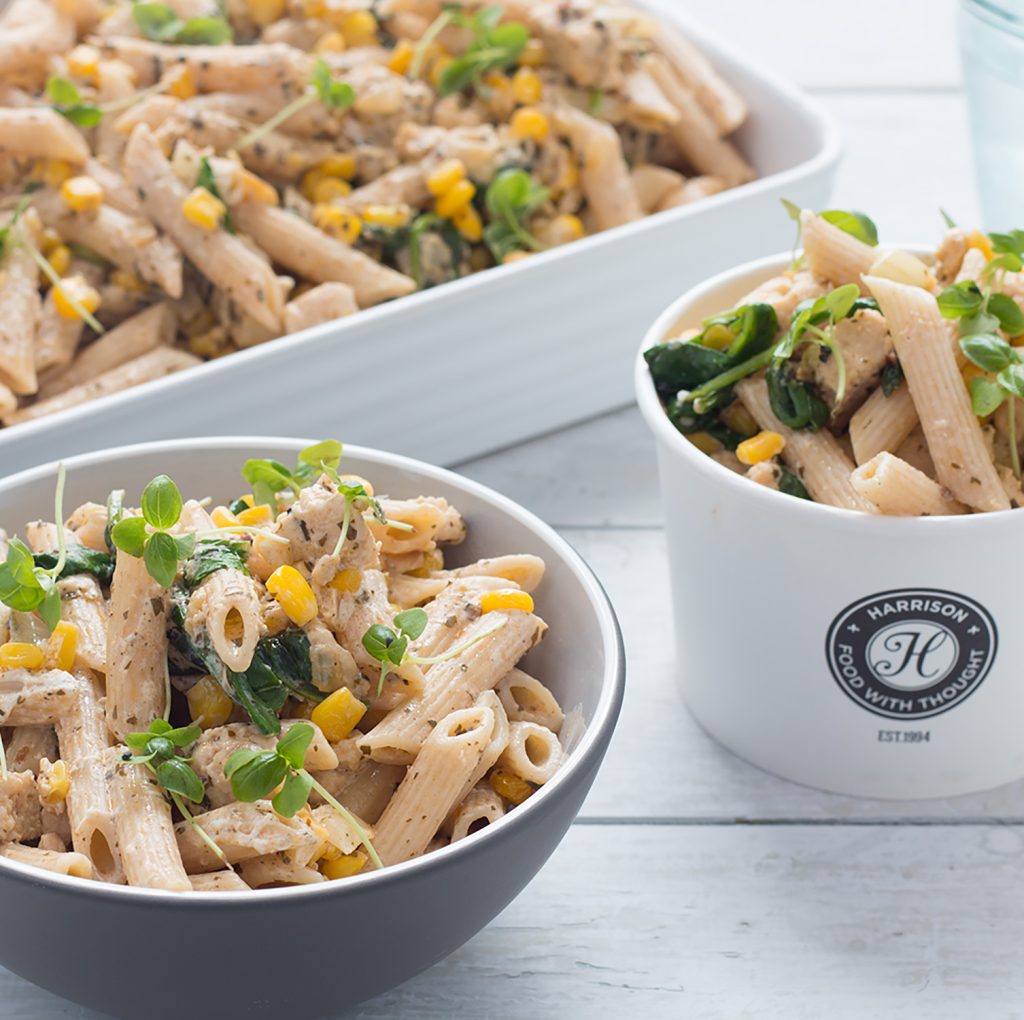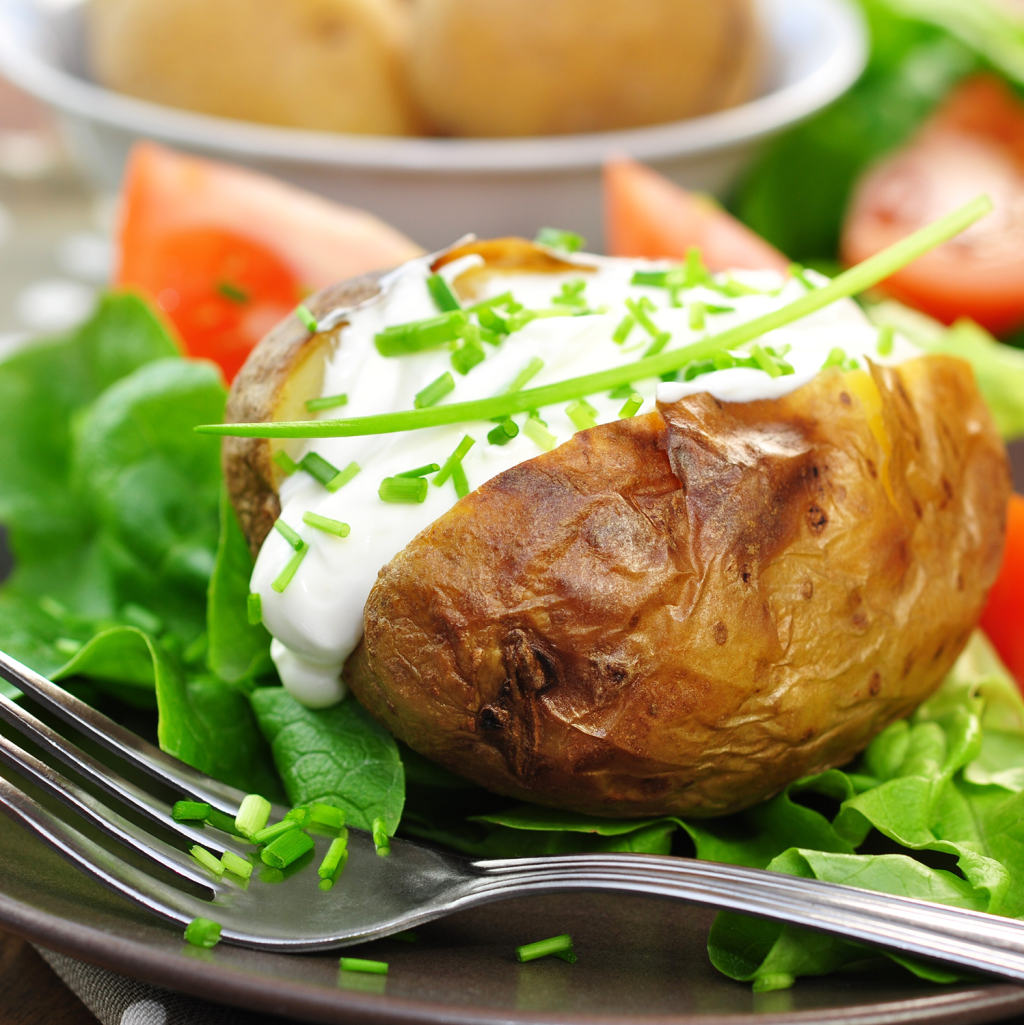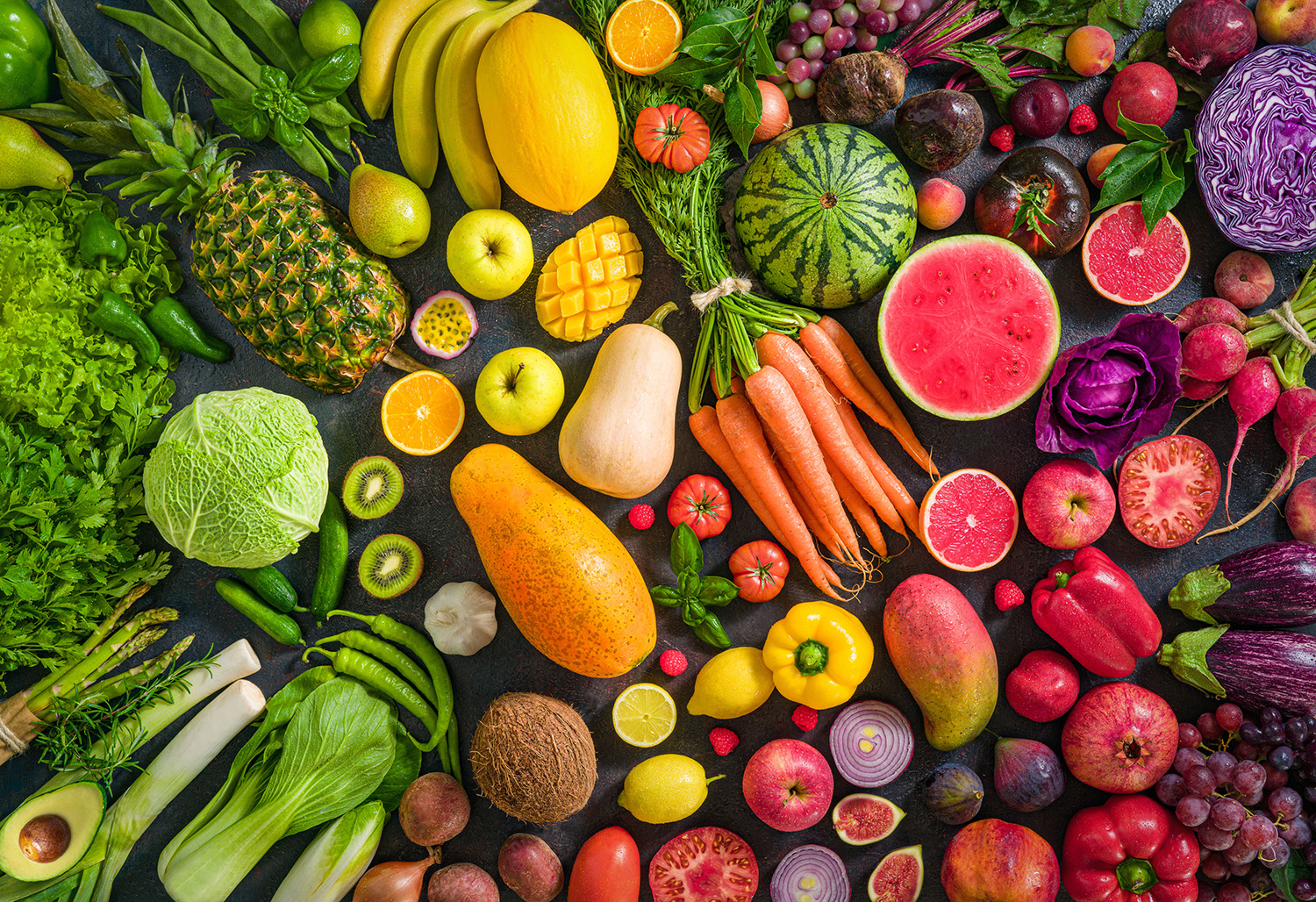
60 second summary:
- It’s ideal if you can take time to enjoy lunch each day
- Choosing a balanced lunch doesn’t have to be complicated
- Try to tick off the four food groups each lunch time and vary your choices each day:
- Carbohydrate foods like rice, pasta, bread and potatoes
- Protein foods like meat, fish, eggs, pulses and tofu
- Fruit and vegetables in a rainbow of colours
- Dairy foods or alternatives like cheese, yoghurt, milk and fromage frais
Lunchtimes, whether at school, college, or work, are becoming increasingly shorter. What was once an hour to sit down and enjoy food together with friends or colleagues is now often a few minutes to grab something to eat, often without sitting down at all or eating on foot or maybe even at a desk.
While it’s ideal to take at least 20 minutes to sit and enjoy your food, eating slowly and taking a break from the stresses of the day, in the real world, that’s not always possible.
Below, we provide some quick tips for making healthy choices at lunchtime to keep you energised all afternoon, whatever the day has in store.

4 steps to a balanced plate
Look out for 4 key food groups to quickly assemble a balanced lunch:
Starchy carbohydrate – This should form the main part of your meal. It could be bread, rice, or pasta (ideally wholegrain or wholemeal). Potato, or even couscous or quinoa. Aim for a portion about the size of your fist. This will give you energy and fibre. Wholegrain versions may contain more fibre and keep you going for longer.
Protein food – These foods help support our muscles and might also help keep us full until the end of the school or working day, so you’re less tempted to snack on sugary foods mid-afternoon. Try meat, poultry, eggs, fish, beans, lentils, or soy products, such as tofu, in a portion size about the size of the palm of your hand.
2 portions of fruit and vegetables – full of vitamins, minerals and fibre, fruit and vegetables fill you up and help keep your heart healthy. You could add some mixed salad to a sandwich, choose a veg-topped pizza, request a side of vegetables with your hot meal, and/or grab a fruit pot. Fruit-based desserts, such as crumble, can be a great way to enjoy a portion of fruit while indulging in a sweet treat. Alternatively, try mixing a fruit pot with some yoghurt for a healthier option.
Dairy foods and alternatives – it’s a good idea to eat 3 portions of dairy foods like milk, yoghurt, fromage frais or cheese each day as they provide protein and calcium which help support bones and muscles. At lunchtime, try a yoghurt pot or a milkshake (opt for unsweetened or lower-sugar options if available), or consider cheese as an alternative. Limit the portion size to no more than a matchbox-sized amount of cheese, as it is also high in saturated fat. Alternatively, opt for lower-fat cheeses, such as cottage cheese or ricotta. If you are dairy-free, opt for unsweetened, fortified dairy alternatives.
Keep it varied
Try to vary what you have throughout the week. It can be tempting to choose a sandwich or panini every day, as it’s portable and convenient. However, the more variety you eat, the more nutrients you consume, and, of course, it keeps things more interesting too.
5 balanced and varied lunches could include:
- A wholegrain pitta, wrap or sandwich with tuna, grated cheese and sweetcorn with a piece of fruit
- Wholegrain pasta pot with mozzarella cheese and tomatoes with hummus and vegetable sticks
- A baked sweet potato with a mixed bean chilli and cheese, or cottage cheese with salad
- Chicken curry with rice and vegetables, and a yoghurt with fruit compote
- A large mixed salad with cous cous, tofu and soy or other dairy-free yoghurt
Claire Baseley – Consultant Nutritionist
